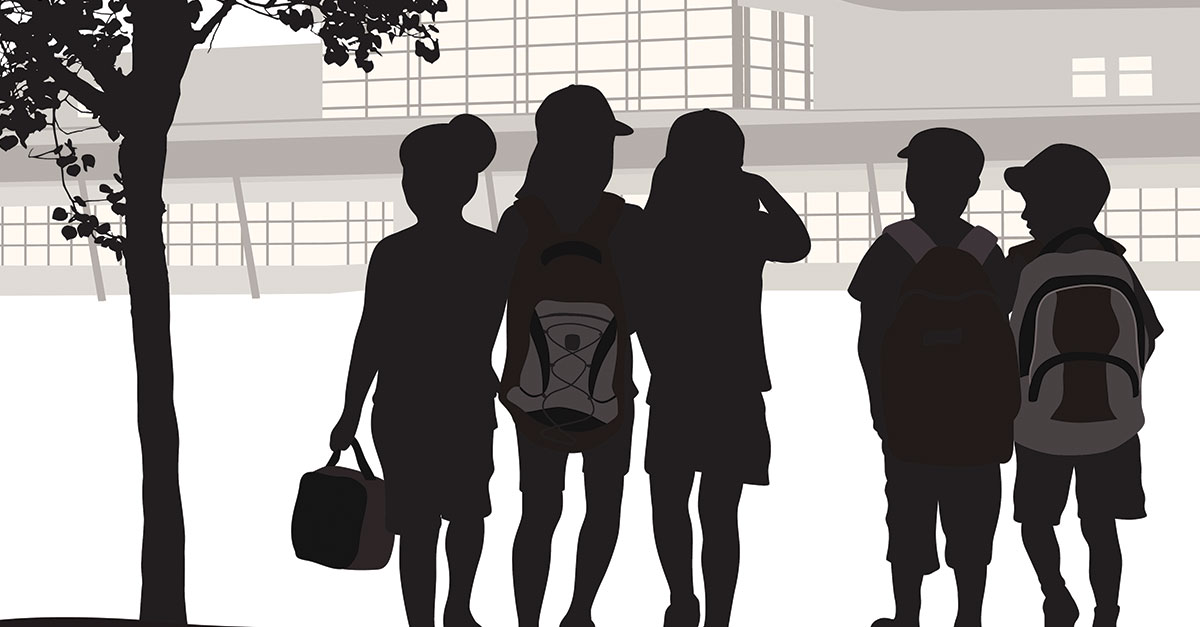As policymakers work to prevent child exploitation, how can schools play a role in identifying and helping vulnerable students in need of support? There are no perfect answers, according to experts, but there are myriad strategies, tips and tools educators can use — many of which were discussed at length in a March 27 webinar.
Hosted by the National Center on Safe Supportive Learning Environments, the webinar focused largely on how to address the unique vulnerabilities of immigrant and refugee young people, students with disabilities, and young people involved in the child welfare system.
“What we find is that kids who have greater challenges tend to need more adult contacts and more oversight and protection and end up usually getting less,” said Diane Smith Howard, managing attorney at National Disability Rights Network. “So, some of the isolation protective factors we see in our work is the amount of adult involvement diminishes for kids who are in state custody.”
Those in state custody do not include children in foster care who have been placed in family-based foster homes — though many experience their own challenges, Smith Howard said. Rather, this group includes young people who end up in juvenile detention facilities, group homes, residential facilities and a variety of other settings. Homeless youth are particularly vulnerable as well, she said.
Trafficking may look different depending on what types of vulnerabilities young people are experiencing, experts noted, with some being forced into labor trafficking, sexual exploitation and other forms of abuse.
Schools can help ensure students have a safe place to go and strong relationships with caring adults. When children are informally removed from the classroom, or if they’re suspended or expelled, “they become extremely vulnerable because they’ve lost all of those adult touch points,” Smith Howard said. “It’s a cyclical problem that only becomes worse the more isolated kids become.”
Homeless youth represent a significant portion of young people who experience exploitation, with about 20 percent of youth who experience homelessness also having had a trafficking experience at some point in their life, explained Kaitlyn Zedalis, associate director of Research, Learning, & Advocacy, for the Covenant House Action & Research Tank at Covenant House New Jersey.
“Youth experiencing homelessness need to find some avenue to have their basic needs met, and that’s what traffickers often exploit. They’re offering to meet a young person’s basic needs in some way, and that’s a big part of what’s making them so vulnerable to exploitation,” Zedalis said. “Young people experiencing homelessness often also have trouble accessing services, either because they’re a minor and can’t consent or because they’re fearful that if they ask for help, they’re going to be reported to child welfare.”
In addition to aiding young people in accessing support services and resources, simply working to keep students in school can make a difference, she continued. “One thing that we’ve identified as a protective factor against human trafficking is caring adult relationships. That’s so important in protecting young people from human trafficking,” Zedalis said.
Schools can take preventative measures, from working to limit truancy or informal removal from the classroom, ensuring young people are connected and engaged, building connections and expanding mentorship and extracurricular opportunities, Smith Howard said.
Transitional services are also crucial. “It’s so important that kids with disabilities see themselves as individuals who will go out in the world of work and be successful. And it’s especially important for kids on the spectrum and kids with traumatic brain injuries, fetal alcohol [spectrum disorders] — those kids tend to be very disconnected from transition services,” she continued. “When school is hard, it’s about finding connections in areas of strength.”
View a recording of the webinar and resources discussed here.





